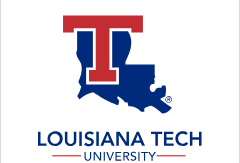Date of Award
Summer 8-24-2024
Document Type
Thesis
Degree Name
Master of Science (MS)
Department
Biology
First Advisor
Jennifer Hill
Abstract
Climate change and human activities are changing the nutritional landscape by increasing the availability of some essential elements and decreasing others. Sodium (Na) is an essential element in heterotrophs, which is required for water regulation, nerve function, and muscle function. Heterotrophs can acquire Na through diet and environment, often experiencing limited availability of Na due to plants concentrating Na 10-100 times less than heterotrophs need. The Sodium Subsidy-Stress (SSS) hypothesis posits that organismal performance follows a hump-shaped curve of a physiological response, where Na acts as a subsidy, increasing organismal performance such as growth until an optimal threshold is reached, after which Na becomes stressful to organisms and performance decreases. The SSS hypothesis can apply to heterotrophs and salt taken in though diet or environment. This refers not only to herbivores consuming living plant life but also to detritivores consuming the detritus that plants produce. This means that decomposers can also experience a salt subsidy or stress. The physiological and ecological consequences of both dietary and environmental Na availability on detritivores, specifically the terrestrial isopod, Armadillidium vulgare, can indirectly affect decomposition rates. I tested the predictions that isopods (Armadillidium vulgare), which are nearly ubiquitous detritivores, follows a subsidy stress response to a gradient of Na availability. Additionally, I tested how dietary NaCl and environmental NaCl pathways impacted growth, survival, assimilation efficiency, mass-specific consumption, water body content, behavior, and tissue concentration. Isopods were exposed to a 3x3 factorial design of dietary NaCl (low, medium, and high) and environmental NaCl (low, medium, and high). In the first experiment, dietary Na availability was manipulated using an artificial diet, and a natural diet with single isopods in laboratory microcosms. In a second experiment, isopod dietary Na availability was manipulated using a natural diet of senesced oak leaves with single isopods in a laboratory microcosm. In these two experiments, environmental Na treatments were the same. Lastly, in a third experiment, environmental Na was manipulated as only low and medium NaCl on isopods raised in groups of 10 per microcosm, and dietary Na was not manipulated. In this way, we were able to explore different diets' effects on salt intake and look at group effects on salt intake via environmental NaCl. A behavioral trial with four quadrant petri dishes of varying environmental NaCl (low, medium, high, and a higher option) was used to look for lasting effects of dietary Na and environmental Na treatments on isopod salt selection. A Na tissue analysis was used to look at internal Na content after treatments. Isopod growth in the artificial diet experiment was minimal but followed a subsidy-stress curve (a quadratic relationship) driven primarily by the environment. In contrast, growth was minimal or negative in the natural diet experiment and showed a positive linear relationship between growth and sodium. The artificial diet also found a slight quadratic relationship driven by environment isopod percent body water content and isopod tissue concentration. The artificial diet also showed a difference in assimilation efficiency in the first week with low environmental treatments showing higher efficiency. The natural diet showed an environmentally driven quadratic relationship in Na tissue content and an interaction between diet and the environment for mass-specific consumption. The group's trials showed no effect sodium treatments had on growth, isopod body water content, and isopod tissue. In addition, in behavioral trials, isopods consistently choose to be in higher salt levels compared to lower levels. These results add to evidence that Na acts as a constraint on decomposition and that ecosystem responses follow a subsidy-stress curve.
Recommended Citation
Orcutt, Danielle Harmoney, "" (2024). Thesis. 130.
https://digitalcommons.latech.edu/theses/130

